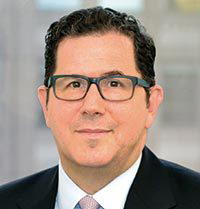After the Ballots
How the ‘year of elections’ reshaped treasury priorities
Published: August 18, 2014


In this interview, Jim Fuell illustrates that while the changing market and regulatory landscape creates uncertainty, by preparing for change, there is the potential for treasurers to take advantage of new investment opportunities and by being open-minded in developing new investment policies, achieve better yields.
The fundamentals of cash investment do not change, whatever the market conditions: to balance security, liquidity and yield. There have been, and continue to be, however, significant changes both within corporate treasury functions and the wider market that impact on how treasurers achieve this balance. A renewed focus on counterparty risk and market volatility, particularly in the years immediately following the global financial crisis, resulted in many companies adopting a ‘flight to quality’ in their investment decisions, and investment policies continue to be far more rigorous than in the past.
Treasury centralisation has been an important theme for some years, including pre-crisis, although the crisis added impetus in many cases. A centralised approach to cash and treasury management significantly influences the amount of cash that treasury is able to invest, and enables a more strategic approach to counterparty risk management and liquidity optimisation. To achieve this, treasurers are focused on achieving global visibility and control of cash, which can be particularly challenging when operating with multiple banks and across a diverse geographic footprint. In addition, improving the timeliness and accuracy of cash flow forecasts continues to be a priority to enable cash to be segmented for investment purposes and facilitate better decision-making.
Despite the constrained liquidity that has characterised the market since 2008, treasurers have largely been well served with high-quality investment solutions that enable them to support their security and liquidity objectives using a balance of money market funds (MMFs), deposits, and in some cases, short-term investment products such as treasury bills, certificates of deposit, tri-party repurchase agreements and commercial paper.
In a low interest rate environment, however, the challenge is inevitably how to achieve improved returns without compromising security and liquidity objectives. In the immediate aftermath of the global financial crisis, company boards were willing to sacrifice yield in favour of security and liquidity, but as market conditions have become more settled, albeit quite different from those that existed pre-crisis, yield is emerging once again as more of a priority; however, security and liquidity remain primary objectives. If asset managers could devise an investment solution that would offer a AAA-rating, same-day liquidity and returns above central bank base rates, they would be doing rather well, but the reality is quite different as investment instruments can inevitably offer two of these, but rarely all three. Consequently, corporate investors should be talking to their investment managers to understand their options, and see where compromises could be made. For example, a company that has achieved a high level of accuracy in cash flow forecasting may be able to sacrifice same-day liquidity on its strategic cash in return for higher yield. This may open up other investment options beyond the existing cash investment portfolio; for example, separately managed accounts or short duration investment funds may be worth considering in some cases.
The biggest changes we are seeing, which are already having an impact on banks and therefore their corporate customers too, are the result of changing regulation.
Regulations on the banking community such as Basel III are beginning to have far-reaching impacts that should not be under-estimated. Although full implementation is not required until 2019, some banks are implementing more quickly, and countries such as the United States are more aggressive in Basel III adoption than others. Consequently, with implementation taking place at different rates, and with varying degrees of priority, we are already seeing some impact within the investment community. For example, while banks will continue to invite corporate cash, they are increasingly differentiating between different forms of cash as their capital and liquidity requirements become more onerous. Consequently, traditional instruments such as short-term deposits may be less attractive than in the past. Not only is this likely to be reflected in the yield, but in the short to medium term at least, banks are likely to be more selective about what cash they accept.
Changing banking requirements will inevitably result in a strategic shift for some banks, which may involve exiting some markets and/ or product types. In others, banks will be developing a new portfolio of investment offerings that differ from those on which investors have relied in the past.[[[PAGE]]]
Further regulatory developments impacting on specific instruments, such as MMFs, continue to be discussed with no clear outcome at present. Changes made in 2010 strengthened the resilience of MMFs by obligating them to adhere to more stringent controls on the maturity and diversification of assets, but there is also an ongoing dialogue within both the US and European regulatory bodies as to the need for potential further changes. Obligating MMFs to operate with a floating or variable net asset value as opposed to their current constant net asset value structure has been a prominent element of these discussions.
The fundamentals of cash investment have not changed, and will not do so. Treasurers will continue to prioritise visibility and control over cash and cash flow forecasting to enable them to segment their cash into operating, core and strategic cash and make investment decisions that balance their security, liquidity and yield objectives. Indeed, as longer-term assets become more attractive to the banks, these activities become even more important.
Secondly, treasurers need to maintain a dialogue with their banks and investment managers to ensure that both parties understand the needs and constraints of each other, and familiarise themselves with emerging opportunities. This may require a new way of thinking about cash investment, and treasurers need to be open-minded and look ahead to new investment horizons.
Thirdly, treasurers need to review their investment policies thoughtfully and pragmatically ahead of the changes ahead. It can take some time to modify investment policies, not least due to the need to engage and in some cases educate the investment committee and board on the implications of a changing regulatory and market climate.
It is important to remember that change is not necessarily negative. New instruments have the potential to change corporate treasurers’ investment portfolios considerably, whilst also meeting their need to balance security, investment and, who knows, even yield. Globalisation is leading to investment opportunities in a wider range of currencies. These offerings are becoming increasingly important as companies expand their business into new markets and their revenue profile evolves. Working with a bank with a global franchise that can support the business globally is crucially important to take advantage of investment opportunities in new, as well as established markets. In Asia, for example, this includes both balance sheet investment solutions and in markets where there is a broad base of both investors and issuers, MMFs in local currencies such as RMB, AUD, SGD and JPY.
New instruments and approaches to cash investment are likely to offer considerable opportunity to innovative corporate treasurers. MMFs will remain important, but other variable NAV funds may also be worth considering in the future.
